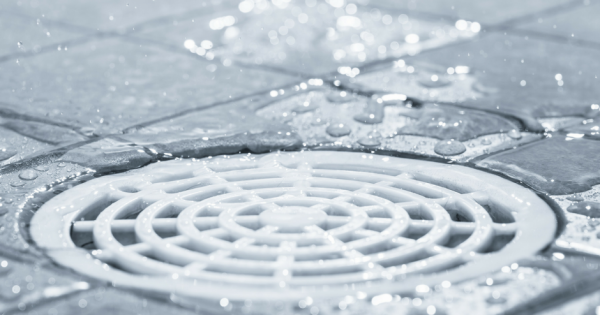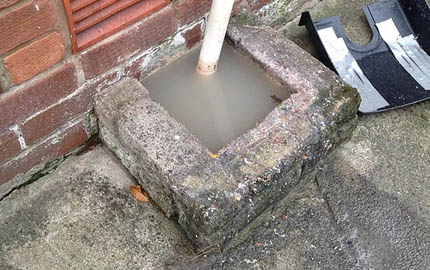Listed here on the next paragraphs you can find more high-quality ideas regarding 8 Tips For Clearing A Blocked Drain.

Intro
Handling a blocked drain can be an irritating experience, interrupting day-to-day activities and possibly causing damages to your residential property. However, prior to connecting to plumbing professionals, there are steps you can take to deal with the issue yourself. In this guide, we'll check out DIY solutions and safety nets to take on an obstructed drain properly.
Determining the Concern
The very first step in addressing an obstructed drainpipe is recognizing the signs. Slow-moving water drainage, gurgling noises, foul odors rising from drains pipes, or water backing up prevail indications of a blocked drain. Identifying these indications early can aid prevent even more issues.
Typical Sources Of Blocked Drainpipes
Comprehending the variables that contribute to drain pipes blockages is essential for effective resolution. Usual culprits include hair, soap residue, oil, food particles, and international items like hygienic products or paper towels. Tree origins getting into underground pipelines can likewise cause substantial blockages.
DIY Solutions
For minor obstructions, numerous do it yourself services can be reliable. Putting boiling water down the drain can assist dissolve oil and debris. Sodium bicarbonate and vinegar or a combination of salt and cooking soft drink can act as natural cleaners. Making use of a bettor or plumbing snake to dislodge obstructions is an additional alternative.
Devices and Tools
Having the right tools handy can make DIY drainpipe cleaning a lot more reliable. A bettor is a versatile tool for removing obstructions in sinks, commodes, and showers. A pipes snake or auger can reach deeper obstructions, while drainpipe cleansing chemicals can be used carefully for persistent blockages.
Safety nets
To prevent future blockages, embracing safety nets is crucial. Set up drain guards or strainers to capture hair and particles before they get in the pipes. Consistently flush drains with warm water to dissolve grease buildup, and avoid dealing with grease or strong waste down the drain.
When to Call a Professional
While do it yourself solutions can fix small blockages, particular signs show the requirement for expert assistance. Consistent obstructions, foul odors regardless of cleaning up initiatives, or multiple drains supporting concurrently are warnings that call for skilled intervention.
Choosing the Right Pipes Service
When selecting a pipes service, consider factors such as experience, licensing, and customer testimonials. Select a trusted plumbing with a performance history of quality handiwork and transparent prices techniques.
Cost Factors to consider
The expense of professional drain cleaning services can vary depending upon the intensity of the blockage and the plumbing professional's prices. Demand quotes from multiple suppliers and inquire about any surcharges to ensure openness and stay clear of surprises.
Safety and security Precautions
When attempting DIY drain cleaning, focus on security. Use protective gloves and eyewear to stay clear of contact with harmful chemicals or germs. Never ever mix various drainpipe cleaning products, as this can create harmful fumes.
Instance Studies
Real-life examples show the performance of do it yourself solutions and the significance of prompt expert intervention in solving drain obstructions.
Final thought
By complying with the suggestions described in this guide, you can effectively deal with obstructed drains pipes and prevent future plumbing concerns. Whether going with DIY remedies or looking for specialist aid, punctual action is vital to keeping a healthy and balanced plumbing system and protecting the honesty of your home.
How to Clear a Clogged Drain Yourself (And When to Call In the Professionals)
What Can Clog a Drain
Dirt Skin flakes Hair Grease Soap scum Food Offset pipes Tree roots Small objects Mineral buildup DIY Tricks to Unclog a Drain
You can fix this! Once you have identified the source of the clog (or have a vague idea), you can try one or a combination of these fixes in order to clear your plumbing.
Wire Hanger or Snake
Untangle and clear out hair from a drainpipe with a homemade snake. Use a straightened-out wire hanger with a 90-degree angle hook to locate the clog and drag out any unwanted material.
Remember not to push the clog further down to where the wire hanger cannot reach! If you need to follow up with a plunger, give it a try. Your efforts might be more successful after it’s been wire-snaked.
If you want to get fancy and don’t have a wire hanger to spare, head to the store and pick up a hand-operated drain snake. You can get one for $10-$30. It may save you the hassle, and provide additional length to reach deep into the clogged pipe.
Plunger
A cup plunger has a suction cup attached to a wooden handle. The rubber creates a seal around the drain, and increases the pressure force of the plunger.
Plunge for 30-second increments to loosen the clog. This may need to be repeated over the course of 15-20 minutes. Once plunged, run the water to flush the remaining material out of the drain.
Remember– never use a plunger if you have used a chemical drain cleaner. These chemicals can splash up from the force of the plunger and cause serious injury or burns.
Boiling Water
Hot water can sometimes break up materials into a flushable amount. Dirt, grease, and soap buildup requires heat in order to unstick from surfaces.
Take your kitchen kettle and heat your water to a boil. Once it reaches a rolling boil, pour it directly down the drain into the blockage. Carefully follow with plunging, if necessary.
Don’t worry if this takes more than one try! It can often take multiple kettles and repeated plunging in order to clear a particularly stubborn clog.
Chemical Drain Cleaner
As a last resort, pick up a bottle of chemical drain cleaner. Drain-cleaning chemicals are potent, and not very good for the environment.
You may need to wear protective eyewear in gloves before handling your bottle of chemical drain cleaner. Follow the instructions printed on the bottle, and flush with water as soon as the instructions allow. Do not follow with plunging.
Baking Soda and Vinegar
As a safer alternative to chemical drain cleaner, baking soda and vinegar can create a chemical reaction that clears tough clogs.
Combine one cup of cleaning vinegar with one cup of boiling water, and set aside. Once you have done this, pour half a cup of baking soda down the drain. Give the baking thirty seconds to settle and cover a large portion of the problem drain.
Following the baking soda, pour down your vinegar and hot water solution. Once the vinegar and baking soda combine, the mixture will bubble and fix. Let this reaction fizzle in the drain for about an hour.
After an hour, follow with a kettle’s worth of hot water. The heat and liquid should flush out any remaining material.
When to Call a Plumber
If your DIY attempts haven’t cleared your clog drain, it’s time to call in a professional. It’s not worth losing access to your kitchen sink or high-traffic bathroom. A clog in a vital area can keep you from the things you’d rather be doing, and derail your routine.
Anytime a clog is causing water to spread is a time to call in a plumbing service. What starts out as a little bit of water can quickly grow into serious, expensive water damage.
Additionally, a serious clog can result in burst pipes or serious leaks. Make sure you know when to take it seriously!
https://myguysnow.com/how-to-clear-a-clogged-drain-yourself-and-when-to-call-in-the-professionals/

Do you enjoy reading up on 8 Tips For Clearing A Blocked Drain? Write a remark further down. We would be happy to hear your insights about this page. In hopes that you come back again soon. Appreciated our blog? Please quickly share it. Help somebody else discover it. Thanks for being here. Return soon.
Call